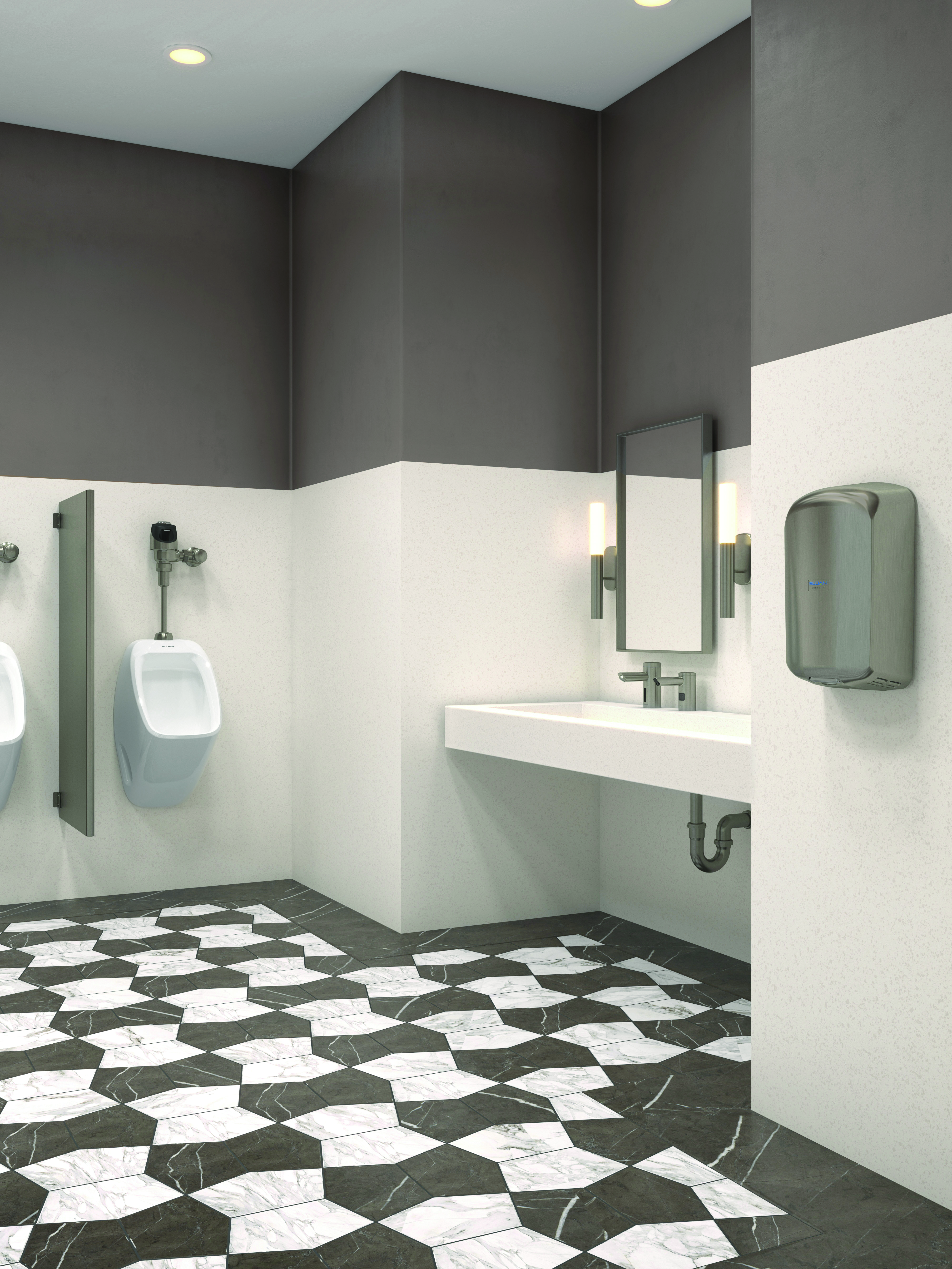Sloan’s special finish options are providing products across the commercial restroom with a unified design to elevate aesthetics. The Physical Vapor Deposition (PVD) process behind these beautiful finishes offers protection against scratches and corrosion. This process enhances a product’s resistance to chemicals and abrasion by bonding at the molecular level to deliver a long-lasting finish – even on curved and angled products that are traditionally difficult to coat. Morgan Butts, Sloan product line manager for sinks, soap dispensers and hand dryers, along with Andrew Warnes, product line manager for faucets, are at the forefront of this innovative process.
What prompted Sloan to put its products through the PVD process as opposed to immersion or powder coating methods?
As Sloan continues to develop our special finishes, what's important to us is product longevity, because we know that there’s a lot of wear and tear on commercial restroom fixtures. The PVD process creates a very durable finish, so you won’t see products scratch and fade like you would with other methods. The PVD process is also beneficial to ensure long-term cohesion. For instance, if your restroom has eight PVD faucets, and you ever need to replace one, that new faucet will look like the others. Whereas, if the initial faucets were powder coated, they would fade over time, and the new faucet would look visibly different. – MB
What does the PVD testing phase entail?
We use a test methodology perfected by the automotive and aerospace industries to predict corrosion over time and under varying conditions. It’s called a copper assisted salt spray (CASS) test that we conduct at our world headquarters. CASS simulates the destructive processes that a product would experience over an extended period in real-world conditions. The test exposes the product to heat, moisture, particulates and abrasion and goes on for a considerable period of time to simulate what the product would look like 10 years from now. The salt spray test is our way of testing if the product can withstand long-term commercial use and still look good. – MB
Why is the PVD process so important to Sloan?
Commercial restroom products should be engineered to extend the lifetime of an architect and designer’s vision. Sooner or later, everything succumbs to degradation, but at Sloan, we’re taking that design vision and making it pass the test of time – because we want the architect to be able to enter a space they designed years ago and be delighted by the way it has held up to daily use. It’s all about pairing original design with long-term durability. – AW
What type of real-world problems do PVD products help to solve?
Architects and designers looking to extend the aesthetics of their design long after installation need to be conscious of what happens in the maintenance arena a year or two down the road. For example, fixtures in high traffic environments like airports, stadiums and universities might go through a disinfection and cleaning process several times each day with chemical power washers. Cleaning crews at these facilities are well-trained on how much product to use to avoid fixture degradation, but high turnover rates can often lead to a lack of training and overuse of chemical cleaning products. PVD fixtures can better withstand this type of cleaning, but powder coating and immersion techniques won’t stand up to that type of abuse for very long. – AW
How does the PVD process help to enhance Sloan’s aesthetic lineup of special finish options?
If you look at the history of Sloan, we’re always aiming to have products that meet the customer's needs. Lately, one of those key needs has been the aesthetics of commercial restroom products. If you ask any designer, they’ll tell you it's a lot of work for them to select matching products. For example, one brand’s polished brass is different than another’s and they don’t know that until they see the products in person. With that in mind, we wanted to make designers’ lives easier and their projects all the more beautiful. – MB
This is the seventh edition in a series of Q&A segments with Sloan product line managers for their take on where the commercial restroom has been, what it’s evolved to now and where it’s going. A previous edition on product compliance can be found here.
Stay Up to Date
Sign up for the Sloan blog to receive information on the latest trends in commercial building, technology advancements and product updates. It's the leading source of industry news for architects, designers, engineers and contractors.
